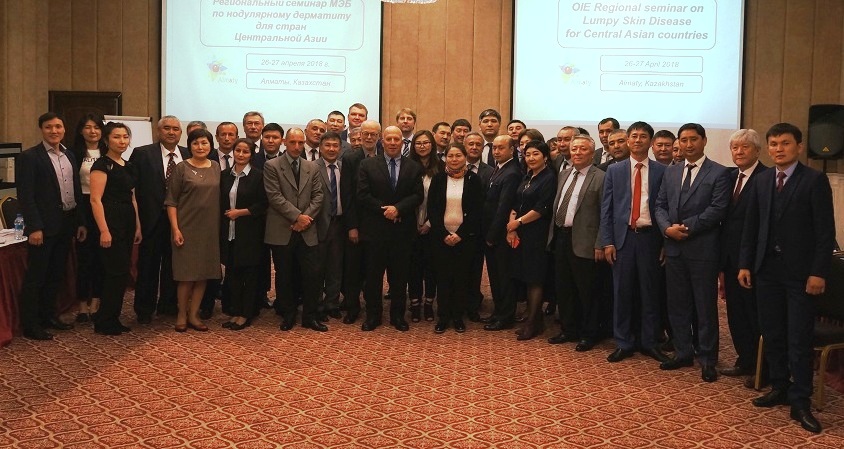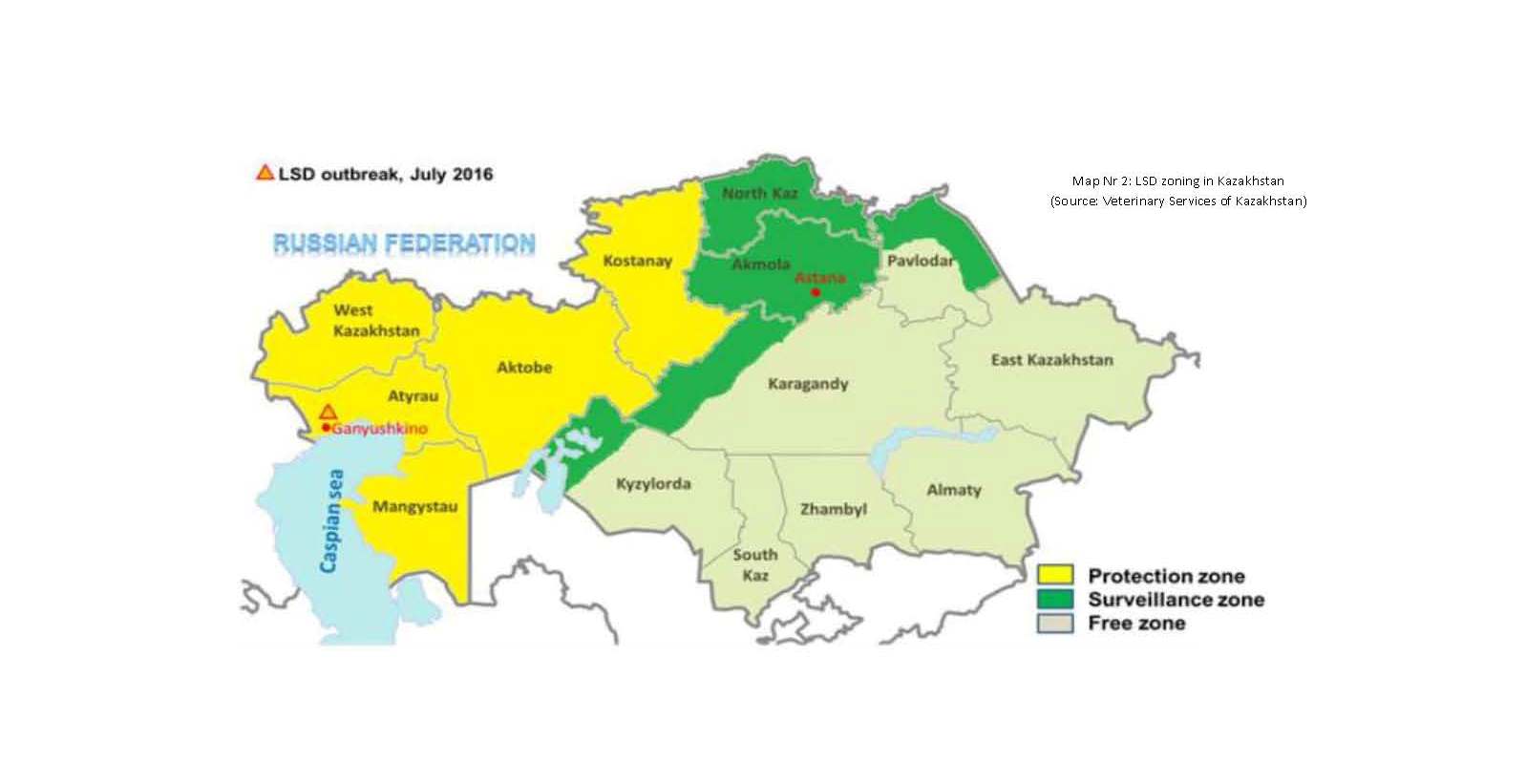Since it spread to South-East Europe in 2016 (Map Nr 1), LSD is a growing concern in Europe. The GF-TADs for Europe identified it as an emerging priority and established a dedicated Group of Experts to enhance a closer cooperation among countries affected or threatened by LSD.
After a significant incursion and spread of LSD in South-East Europe, mainly between April and July 2016, it appeared for the first time in Central Asia in July 2016 in Kazakhstan.
When LSD occurred in 2016 in Kazakhstan (WAHIS details below), near the border with Russia, the Veterinary Services were not fully prepared to face this exotic animal disease, having no vaccine for LSD prevention. However, the outbreak was efficiently controlled, with stamping out and a mass vaccination campaign around the outbreak site.
Following the good results in controlling the disease, in February 2018, Kazakhstan required a mission from the Standing Group of Experts on LSD (SGE LSD) to assess the current preventive measures, including the LSD contingency plan they developed, and to provide recommendations on LSD surveillance, prevention and control measures in case of disease occurrence, identifying risk factors and possible routes for LSD introduction and spread in Kazakhstan.
Drawing lessons from the first LSD outbreak experience and expert support received, the Veterinary Services of Kazakhstan conducted LSD simulation exercise in West Kazakhstan region in April 2018, to evaluate their organisation’s readiness.
Keeping the momentum of this mission and having in mind that the outbreak in Kazakhstan highlighted the need for neighboring countries to be aware of a risk so close to Central Asia, the OIE Sub-regional representation for Central Asia organized a regional seminar on LSD, to enhance the LSD preparedness of the countries of the region and, thereby, encourage them to draft/update their LSD contingency plans and organize field simulation exercises in appropriated cases.
All participants of the seminar showed a very high interest in this seminar, asking many questions to the experts and stressing the need to be well prepared for the emergence of LSD, notably with proper knowledge and experience, information on virus, vaccine efficacy and immunity timeframes, outbreak management and disease control. They agreed that the main risk factor for the emergence and spread of LSD remains the illegal movement of susceptible animals in latency stage of infection.
According to Dr Nadav Galon, team leader of SGE LSD mission in Kazakhstan, the previous outbreak was handled successfully, thanks to the stamping out and sufficient area covered by the vaccination in the protection and surveillance zones (Map Nr 2). This was confirmed by Kris De Clercq, another LSD expert involved in the mission in Kazakhstan, who emphasized that none of the currently infected countries had been able to limit the spread or eradicate the disease without vaccination.
The seminar finally pointed out the importance of having access to up-to-date information regarding LSD (hosts, transmission, sources of virus, seasonal nature), to today’s situation on LSD in Europe, as well as best practices in fighting LSD. This event demonstrated the high importance of risk assessment and LSD prevention strategies, as well as of contingency plans, vaccines and vaccination, diagnostic and efficient control measures.
Thanks to this seminar, Central Asian countries learned lessons from the very good LSD management by South-East Europe countries, strongly committed in an LSD regional coordinated control policy. They now feel able to verify their level of readiness to face LSD, provided that they get some targeted support to improve their technical capacities.
The experts stressed the importance of the regional cooperation and coordination between countries, as a crucial requirement for effective LSD control and prevention.



